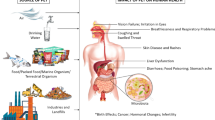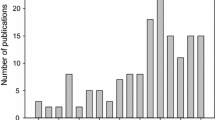Abstract
Understanding mass transfer effects (e.g., condensation and absorption) of hydrogen peroxide is essential for clean room decontamination technology. For example, absorption of hydrogen peroxide in polymers often causes unwanted effects in the final aeration phase of a decontamination cycle. This currently leads to significant challenges in the design and operation of clean rooms or isolators. We address here the absorption of H2O2 in polymers, which is a key for an understanding of mass transfer effects. Specifically, we developed a novel experimental setup to measure the desorption rate from a polymer sheet. Together with a model for the diffusion in a polymer, we are able to theoretically predict the absorption and desorption kinetics of hydrogen peroxide. We then performed measurements of still unknown properties of hydrogen peroxide in polymers, i.e., the saturation concentration and the diffusion coefficient using our experimental setup. As expected, the diffusion in the polymer is the rate-limiting step for the absorption and the release of H2O2. We find that considerable amounts of H2O2 can be absorbed in certain polymers on a time scale of less than an hour and may lead to a temporary violation of the Occupational Safety and Health Administration safety level in a typical clean room.










Similar content being viewed by others
Abbreviations
- C H2O2 :
-
Concentration of hydrogen peroxide [kmol/m³]
- D i :
-
Diffusion coefficient of species i [cm²/s]
- D H2O2,p :
-
Diffusion coefficient of hydrogen peroxide in a polymer [cm²/s]
- Fo :
-
Fourier number
- K i :
-
Partition coefficient
- l c :
-
Characteristic length scale
- L :
-
Length scale of the flow
- MW i :
-
Molecular weight of species i [g/mol]
- \( \dot{N} \) :
-
Mass flow rate [mol/s]
- p :
-
Pressure [Pa]
- r p,i :
-
Mass transfer resistance of species i in phase p
- Re :
-
Reynolds number
- Sc :
-
Schmidt number
- Sh :
-
Sherwood number
- t :
-
Time
- T :
-
Temperature [K]
- V Liquid :
-
Liquid volume [L]
- V Polymer :
-
Polymer volume [m³]
- x :
-
Spatial coordinate (normal to the surface of a thin sheet) [m]
- x*:
-
Dimensionless spatial coordinate
- β :
-
Mass transfer coefficient [m/s]
- ν :
-
Kinematic viscosity [m²/s]
References
Müller HJ, Sommermeyer K, Cech F. Permeation of gaseous hydrogen peroxide and peracetic acid into IV bags during their surface sterilisation. Hospital Pharmacist. 2003;10:84–6.
Henschel, D. Compilation of available data on building decontamination alternatives. US Environmental Protection Agency, Washington, DC, EPA/600/R-11/012, 2005.
Unger-Bimczok B, Kottke V, Hertel C, Rauschnabel J. The influence of humidity, hydrogen peroxide concentration, and condensation on the inactivation of Geobacillus stearothermophilus spores with hydrogen peroxide vapor. J Pharm Innov. 2008;36(2):123–33.
Sigwarth V, Moirandat C. Development and quantification of H2O2 decontamination cycles. PDA J Pharma Sci Tech. 2000;54(4):286–304.
Radl S, Ortner S, Sungkorn R, Khinast JG. The engineering of hydrogen peroxide decontamination systems. J Pharm Innov. 2009;4(2):51–62.
Baron PA, Estill CF, Beard JK, Hein MJ, Larsen L. Bacterial endospore inactivation caused by outgassing of vapourous hydrogen peroxide from polymethyl methacrylate (Plexiglas((R))). Lett App Micro. 2007;45(5):485–90.
Rohtagi N, Schuber W, Koukol R, Foster TL, and Stabekis PD. Certification of vapor phase hydrogen peroxide sterilization process for spacecraft application. Society of Automotive Engineers, Inc. 2001
Claassen M. Neues Einrichtungs- und Sterilisationskonzept für Laborräume. Germany: University of Bremerhaven; 2010.
Thomas WJ, Crittenden BD. Adsorption technology and design. Oxford: Butterworth-Heinemann; 1998.
Crank J. The mathematics of diffusion. Oxford: Oxford Science Publications; 1975.
Phibbs MK, Giguere PA. Hydrogen peroxide and its analogues III. Absorption spectrum of hydrogen and deuterium peroxides in the near ultraviolet. Can J Chem. 1951;26(6):490–3.
Zhou MJ, Diwu ZJ, Panchuk-Voloshina N, Haugland RP. A stable nonfluorescent derivative of resorufin for the fluorometric determination of trace hydrogen peroxide: applications in detecting the activity of phagocyte NADPH oxidase and other oxidases. Anal Biochem. 1997;253(2):162–8.
Moes JJ, Ruijken MM, Gout E, Frijlink HW, Ugwoke MI. Application of process analytical technology in tablet process development using NIR spectroscopy: blend uniformity, content uniformity and coating thickness measurements. Int J Pharm. 2008;357(1–2):108–18.
Mantanus J, Ziemons E, Lebrun P, Rozet E, Klinkenberg R, Streel B, et al. Moisture content determination of pharmaceutical pellets by near infrared spectroscopy: method development and validation. Anal Chim Acta. 2009;642(1–2):186–92.
Fischer D, Bayer T, Eichhorn KJ, Otto M. In-line process monitoring on polymer melts by NIR-spectroscopy. Fresenius J Anal Chem. 1997;359(1):74–7.
Moor J. Application of NIR imaging and multivariate data analysis for pharmaceutical products. Munich: University of Applied Sciences Munich; 2010.
Acknowledgments
The authors acknowledge the support of Johannes Hofer and Michael Gruber (both RCPE GmbH) during the absorption/desorption measurements, as well as Johann Moor for performing the NIRS measurements. We thank the RCPE GmbH for the financial support and for providing laboratory infrastructure, and the anonymous reviewers for their critical comments and suggestions.
Author information
Authors and Affiliations
Corresponding author
Appendices
Appendix A—Mass Transfer Regime Determination
In order to understand the limiting factor in the release of H2O2 from the polymer, here we briefly analyze the ratio of the mass transfer resistances in the fluid and in the polymer phase. This ratio indicates whether a regime with transport limitation in the polymer or with limitation in the fluid phase is present.
A sketch of the concentration profiles during the desorption process is shown in Fig. 11. Initially, the polymer is assumed to be fully saturated with H2O2. The concentration of H2O2 in the fluid phase (e.g., in the aqueous solution used for the desorption experiments or in the surrounding air in the industrial application) is assumed to remain zero far away from the interface. During a desorption experiment, the H2O2 concentration in the fluid phase will slightly increase. However, typically this increase is small due to the large ratio between the volume of the fluid phase (e.g., the room volume) and the polymer. Hence, this increase can be safely neglected.
The system compensates the occurring concentration difference by mass transport of H2O2 from the polymer phase to the fluid phase (see Fig. 11). During this process, H2O2 in the fluid and the polymer phase is in equilibrium only at the polymer surface. This equilibrium between a fluid phase and the polymer is defined by the partition coefficient K i . Thus, next to the polymer surface we write:
Here “i” denotes the diffusing species (in our case hydrogen peroxide), “s” denotes the solid, and “f” denotes the fluid phase (i.e., a gas or a liquid). The partition coefficient is the ratio of the solute’s concentration (i.e., H2O2) between two phases under equilibrium conditions. It is a function of the solute and the properties (essentially temperature and pressure) of the two phases in contact.
Estimation of the Mass Transfer Coefficient in the Gas Phase
To describe the characteristics of the mass transfer of H2O2 in the gas phase, the mass transfer coefficient β [m s−1] has to be estimated:
Here, Sh is the Sherwood number, D i,gas is the diffusion coefficient in the gas, and L is a reference length for the flow. Sh depends on the flow conditions, and the flow of air with three different velocities u ∞ (0.1, 5, and 10 m s−1) over a plane sheet with L = 0.2 m was considered for our analysis. The kinematic viscosity ν gas of air at the temperature of 293.15 K was assumed to be 1.51E–05 m2 s−1. The Reynolds number is defined as:
For 10 ≤ Re ≤ 107 and 0.7 ≤ Sc ≤ 70.000, the mean Sherwood number (i.e., the Sherwood number averaged over the length L) for the flow over a flat plate was estimated by using the Krischer and Kast correlation:
Sh lam was calculated by using the Pohlhausen correlation:
while Sh turb was estimated by using the Petukhov and Popov correlation:
For the calculation of the diffusion coefficient of H2O2 in air, the correlation of Fuller/Schettler/Giddings was used:
Here p, T, ν, and M G,12 refer to the pressure (1 bar), temperature (293.15 K), atomic diffusion volume and a mean molecular weight, defined as:
In this equation, MW1 and MW2 is the molecular weight of H2O2 and air, respectively.
The results of the calculation of the mass transfer coefficient for the flow over a flat plate are summarized in Table 5.
Now, the mass transport resistance in the gas phase with respect to the solid phase (i.e., the polymer; to compare mass transport resistances, they must be defined with respect to the same phase) can be defined as:
Here, K i denotes the partition coefficient, and we used the value for water in LDPE as a typical example (i.e., K i = 5.10−5, based on [1]). This value is thought to be also representative for the partition coefficient of H2O2 in polymers.
The mass transport resistance in the polymer can be defined as:
Here, β polymer and D i,polymer refer to the mass transfer coefficient in the polymer, and the diffusion coefficient of H2O2 in the polymer. l c describes a characteristic length of the polymer sheet. Taking the ratio of the mass transport resistance in the polymer and in the gas, one obtains the expression for the Biot number shown in Eq. 1.
For our example, mass transfer of hydrogen peroxide to LDPE, D i,polymer is approximately 1E-11 [m2 s−1]. Assuming a 1 mm thick sheet of this polymer, and a mass transfer coefficient in the gas phase of β = 0.027 m/s (see the value for u ∞ = 5 m s−1 in Table 5), one obtains for the resistances in the gas phase and in the polymer 1.9E–03 and 1E08 m−1 s, respectively.
Rights and permissions
About this article
Cite this article
Radl, S., Larisegger, S., Suzzi, D. et al. Quantifying Absorption Effects during Hydrogen Peroxide Decontamination. J Pharm Innov 6, 202–216 (2011). https://doi.org/10.1007/s12247-011-9114-6
Published:
Issue Date:
DOI: https://doi.org/10.1007/s12247-011-9114-6





